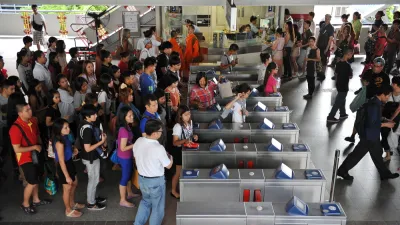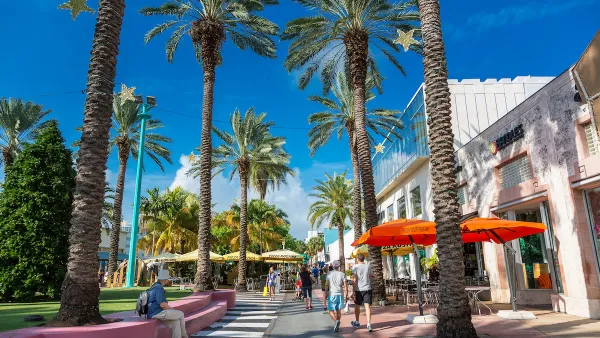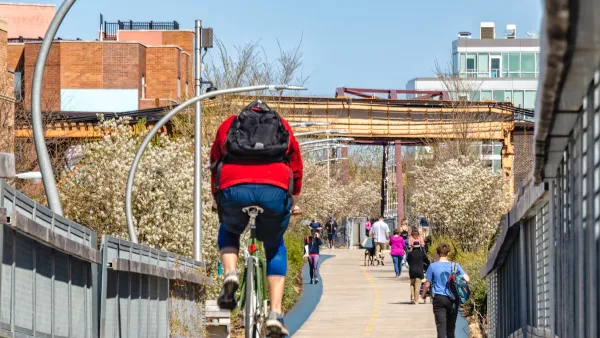Jarrett Walker outlines the conditions under which transit serves the greatest number of travelers. Maximizing ridership, he argues, requires thinking like a business and catering to demand.

In an article on his blog, Jarrett Walker writes, "Maximizing ridership is like maximizing the number of customers for any business. You have to think like a business, and the first thing businesses do is choose which markets they will enter. Unlike governments, businesses feel no obligation to provide their service in places where they would spend a lot of money to serve very few people."
Walker differentiates ridership from transit coverage, which is often a politically-motivated goal. "Commentators sometimes criticize transit authorities for low ridership, as though transit were a failing business. But transit authorities are rarely directed to maximize ridership as their primary goal, so they're not failing if they don't."
"A more precise question is: 'what percentage of our resources should our transit authority spend pursuing maximum ridership?' When transit authorities answer that question, then everyone knows what the purpose of the service is."
Walker explains in detail the factors behind transit demand. They include:
- Frequency of service: "People who are used to getting around by a private vehicle (car or bike) often underestimate the importance of frequency, because there isn't an equivalent to it in their experience."
- Overall diversity of trips served (as opposed to personalized service)
- Travel time, including time spent waiting
Finally, Walker discusses how the urban landscape affects ridership, focusing on density, walkability, linearity, and proximity.
FULL STORY: Explainer: The Transit Ridership Recipe

Analysis: Cybertruck Fatality Rate Far Exceeds That of Ford Pinto
The Tesla Cybertruck was recalled seven times last year.

National Parks Layoffs Will Cause Communities to Lose Billions
Thousands of essential park workers were laid off this week, just before the busy spring break season.

Retro-silient?: America’s First “Eco-burb,” The Woodlands Turns 50
A master-planned community north of Houston offers lessons on green infrastructure and resilient design, but falls short of its founder’s lofty affordability and walkability goals.

Test News Post 1
This is a summary

Analysis: Cybertruck Fatality Rate Far Exceeds That of Ford Pinto
The Tesla Cybertruck was recalled seven times last year.

Test News Headline 46
Test for the image on the front page.
Urban Design for Planners 1: Software Tools
This six-course series explores essential urban design concepts using open source software and equips planners with the tools they need to participate fully in the urban design process.
Planning for Universal Design
Learn the tools for implementing Universal Design in planning regulations.
EMC Planning Group, Inc.
Planetizen
Planetizen
Mpact (formerly Rail~Volution)
Great Falls Development Authority, Inc.
HUDs Office of Policy Development and Research
NYU Wagner Graduate School of Public Service




























